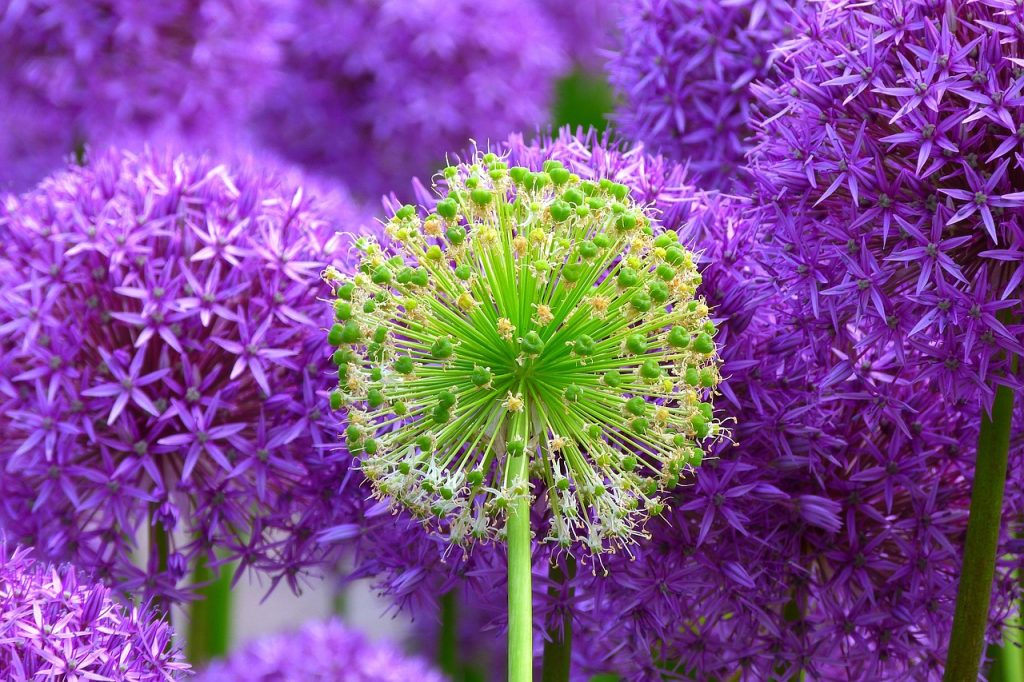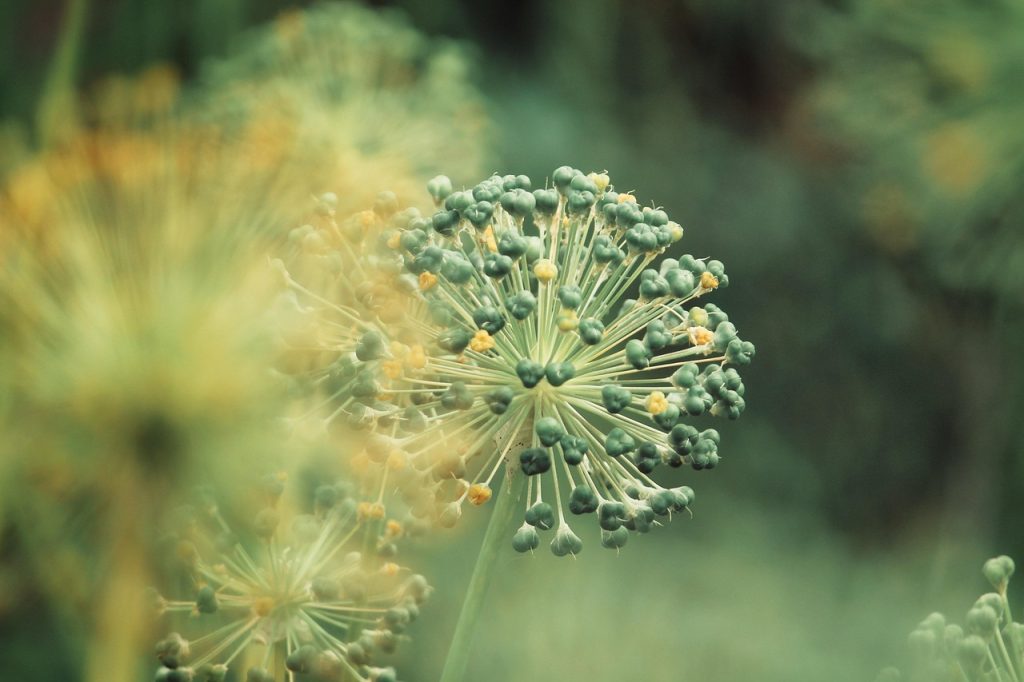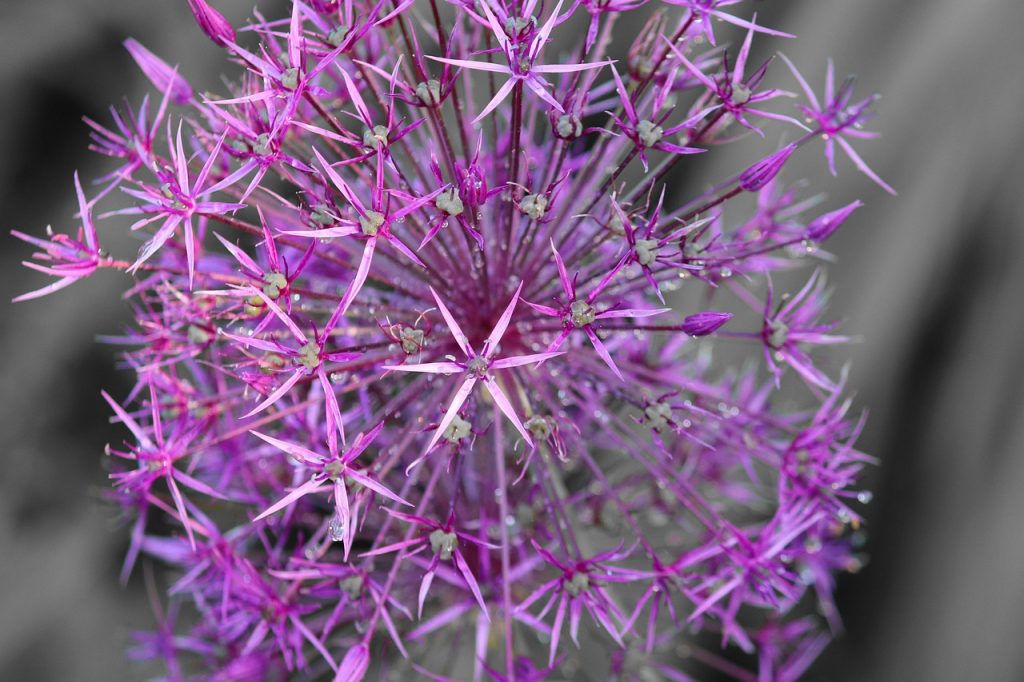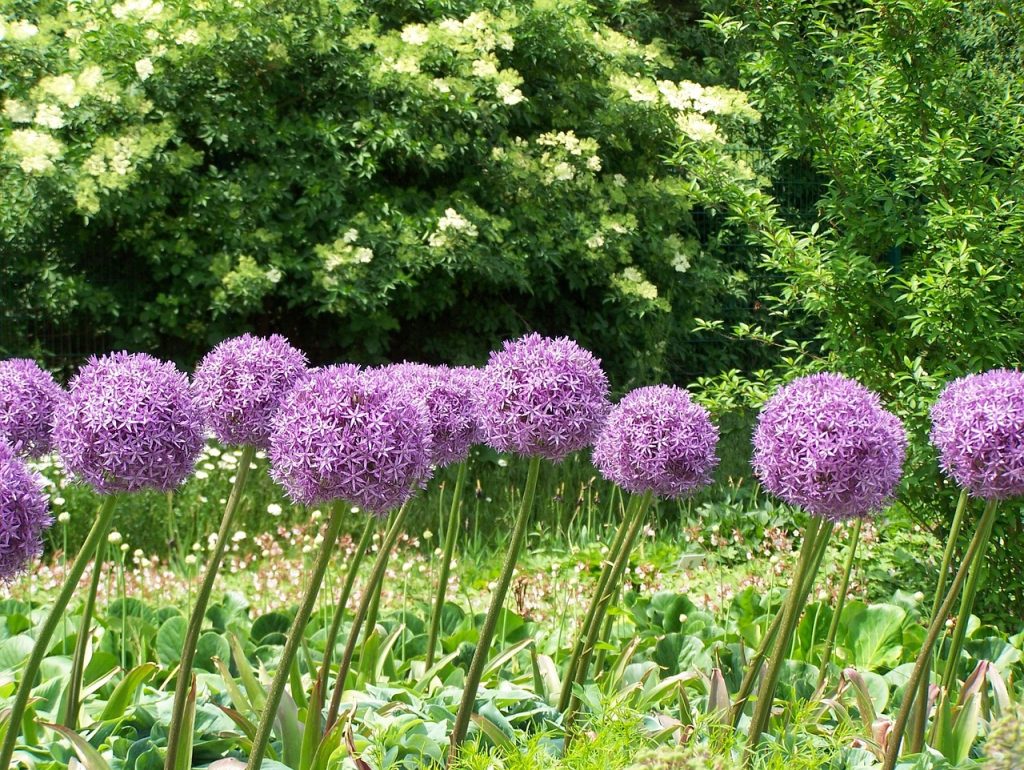The allium genus, encompassing over 700 species, is a gardener’s delight, offering a diverse range of ornamental plants known for their striking spherical blooms and vibrant colors. Among these, certain allium varieties bear a striking resemblance to tulips, particularly in their foliage, which can lead to confusion among beginner and intermediate gardeners. The keyword “allium plant looking like tulip leave 2 seasons” highlights a unique characteristic of some alliums: their ability to provide visual interest across two growing seasons, spring foliage and summer blooms. This article aims to clarify the confusion between tulip-like alliums and tulips, offering practical guidance on identification, care, and cultivation to help you successfully grow these stunning plants in your garden.

Alliums, often called ornamental onions, are hardy, low-maintenance perennials that thrive in various climates. Their tulip-like leaves emerge in spring, followed by dramatic blooms in summer, making them a versatile choice for gardeners seeking year-round appeal. Whether you’re a novice looking to enhance your garden or an intermediate gardener aiming to refine your skills, this guide will help you understand, identify, and nurture allium plants that resemble tulips and shine across two seasons.
Key Identification Features
Distinguishing allium plants with tulip-like leaves from actual tulips can be tricky, especially in early spring when their foliage looks remarkably similar. Here are key visual clues to help you tell them apart:
- Leaf Shape and Texture: Allium leaves are typically long, strap-like, and slightly broader than tulip leaves, often with a waxy or glossy texture. Tulip leaves tend to be more uniformly smooth and slightly curved at the edges.
- Leaf Color: Allium leaves may have a bluish-green hue, especially in varieties like Allium karataviense, while tulip leaves are usually a brighter green.
- Growth Habit: Alliums often produce a rosette of leaves at the base, with a single flowering stem emerging later. Tulips typically have a more compact, upright leaf arrangement.
- Scent: Crush a leaf gently, alliums often emit a faint onion-like smell, a telltale sign of their relation to the onion family, whereas tulip leaves lack this scent.
- Bloom Structure: While leaves may look similar in spring, alliums produce spherical or star-shaped flower heads in summer, unlike the cup-shaped blooms of tulips.
By observing these features, you can confidently identify allium plants looking like tulip leaves in your garden.
Allium Varieties to Know
Several allium species are known for their tulip-like foliage, making them excellent choices for gardeners seeking plants that mimic tulips in spring and dazzle with blooms in summer. Here are some standout varieties:
- Allium karataviense: This low-growing allium (8–12 inches tall) features broad, bluish-green leaves that closely resemble tulip foliage. Its compact, silvery-pink flower heads bloom in late spring to early summer, adding a soft glow to rock gardens or borders.
- Allium giganteum: Known as the giant allium, this variety boasts large, strap-like leaves and towering stems (up to 4 feet) topped with vibrant purple, globe-like blooms. Its foliage mimics tulips early in the season, making it a striking focal point.
- Allium moly: Also called golden garlic, this smaller allium (6–12 inches) has flat, lance-shaped leaves and produces cheerful yellow star-shaped flowers in early summer.
- Allium sphaerocephalon: Known as drumstick allium, it has slender, tulip-like leaves and produces dense, egg-shaped purple flower heads in mid-summer.

Growth in Two Seasons
What makes the “allium plant looking like tulip leave 2 seasons” so special is its ability to offer visual interest across two distinct growing periods. In spring, these alliums produce lush, tulip-like foliage that adds structure and greenery to garden beds. By summer, their iconic spherical blooms emerge, transforming the garden with bursts of color. This dual-season appeal makes them a favorite for gardeners seeking low-maintenance plants with extended beauty.
- Spring Foliage: In USDA hardiness zones 4–9, allium leaves emerge in early to mid-spring, depending on the climate. The foliage provides a lush backdrop for other spring bloomers like daffodils or early tulips.
- Summer Blooms: By late spring or early summer, the flowering stems rise, producing vibrant blooms that can last 2–4 weeks, depending on the variety and weather conditions.
- Care Timeline:
- Early Spring: Leaves emerge, ensure adequate moisture and light.
- Late Spring: Flower buds form, reduce watering as foliage begins to yellow.
- Summer: Blooms peak, deadhead spent flowers to encourage bulb energy storage.
- Fall: Plant bulbs for the next season, mulch in colder zones for winter protection.
This two-season cycle makes alliums a versatile addition to any garden, offering both aesthetic and practical benefits.
Planting & Care Instructions
Growing allium plants with tulip-like leaves is straightforward, even for beginners. Follow these step-by-step instructions to ensure success:
Planting Guide
- When to Plant: Plant allium bulbs in fall (September–November) to allow roots to establish before winter. This ensures strong spring growth.
- Soil Requirements: Alliums thrive in well-draining, fertile soil with a pH of 6.0–7.0. Amend heavy clay soils with compost or sand to improve drainage.
- Sunlight: Choose a location with full sun (6–8 hours daily) for optimal growth and blooming.
- Spacing: Plant bulbs 4–6 inches apart for smaller varieties like Allium moly and 8–12 inches apart for larger ones like Allium giganteum. Plant bulbs 2–3 times their height deep (typically 4–6 inches).
- Steps:
- Dig a hole to the appropriate depth.
- Place the bulb with the pointed end up.
- Cover with soil, firm gently, and water thoroughly.
Watering and Fertilizing
- Watering: Water moderately after planting to encourage root growth. In spring, maintain consistent moisture during active growth, but reduce watering as foliage dies back in summer.
- Fertilizing: Apply a balanced fertilizer (e.g, 10-10-10) in early spring as leaves emerge. Avoid over-fertilizing, as it can lead to excessive foliage at the expense of blooms.

Overwintering and Re-Blooming
- In zones 4–9, alliums are hardy and can remain in the ground over winter. Apply a 2–3 inch layer of mulch in colder zones to protect bulbs from freezing.
- To encourage re-blooming, allow foliage to die back naturally after flowering, as this helps the bulb store energy for the next season.
- Divide overcrowded clumps every 3–4 years in fall to maintain vigor.
Real-Life Use Cases
Allium plants looking like tulip leaves across two seasons are incredibly versatile in garden design. Here are some practical ways to incorporate them:
- Garden Design: Use Allium giganteum as a dramatic focal point in mixed borders, pairing its tall blooms with low-growing perennials like lavender or catmint. Allium karataviense is perfect for rock gardens or edging pathways due to its compact size.
- Companion Planting: Pair alliums with plants that complement their two-season appeal, such as:
- Spring: Daffodils, hyacinths, or early tulips to enhance the foliage phase.
- Summer: Salvia, coreopsis, or roses to contrast with allium blooms.
- Naturalizing: Alliums like Allium moly are ideal for low-maintenance gardens. Plant them in drifts in grassy areas or under deciduous trees for a naturalized look that returns year after year.
If you’re new to gardening and want to start with something simple yet rewarding, our Spring Bulb Planting Guide for Beginners offers step-by-step tips to help you get started the right way.
Common Mistakes & Solutions
Avoid these common pitfalls to ensure your allium plants thrive:
- Misidentification with Tulips: Mistaking allium leaves for tulips can lead to improper care. Solution: Check for the onion-like smell and observe the bloom structure in summer to confirm allium identity.
- Overwatering or Poor Drainage: Alliums dislike soggy soil, which can cause bulb rot. Solution: Plant in well-draining soil and avoid overwatering, especially after foliage dies back.
- Improper Planting Timing: Planting bulbs too late in fall can result in weak spring growth. Solution: Plant in early fall, at least 6–8 weeks before the first frost, to allow root establishment.

FAQs
Tulip leaves are smooth, bright green, and slightly curved, while allium leaves are often broader, bluish-green, and waxy, with a faint onion-like smell when crushed.
Yes, certain alliums like Allium karataviense and Allium giganteum produce tulip-like foliage in spring and vibrant blooms in summer, offering interest across two seasons.
Absolutely! Their similar foliage creates a cohesive look in spring, and their differing bloom times (tulips in spring, alliums in summer) extend garden interest. Ensure both have well-draining soil and full sun.
Allium blooms typically last 2–4 weeks, depending on the variety and weather. Larger varieties like Allium giganteum may have longer-lasting blooms.
Conclusion
Allium plants looking like tulip leaves across two seasons are a fantastic addition to any garden, offering lush spring foliage and stunning summer blooms. By understanding their identification features, choosing the right varieties, and following proper planting and care techniques, beginner and intermediate gardeners can enjoy these low-maintenance, high-impact plants. Whether you’re designing a vibrant border, naturalizing a lawn, or pairing alliums with complementary plants, their versatility and beauty make them a must-have. Start planting this fall to experience the magic of alliums in your garden across two seasons!